Inside: Six art history-focused early finisher activities for students who complete their classwork long before everyone else. These activities are inspired by works of art with a focus on art history.
One of the biggest challenges any teacher faces is what to do with the early finishers. You know the students I’m talking about – the ones who turn in their paper while everyone else is still working and then twiddle their thumbs or distract their peers for the rest of the class period. You want these students to stay engaged and spend their class time productively, but who has time to plan a secondary lesson just in case there are some early finishers? I know I don’t. (If you do, please share your secrets!)
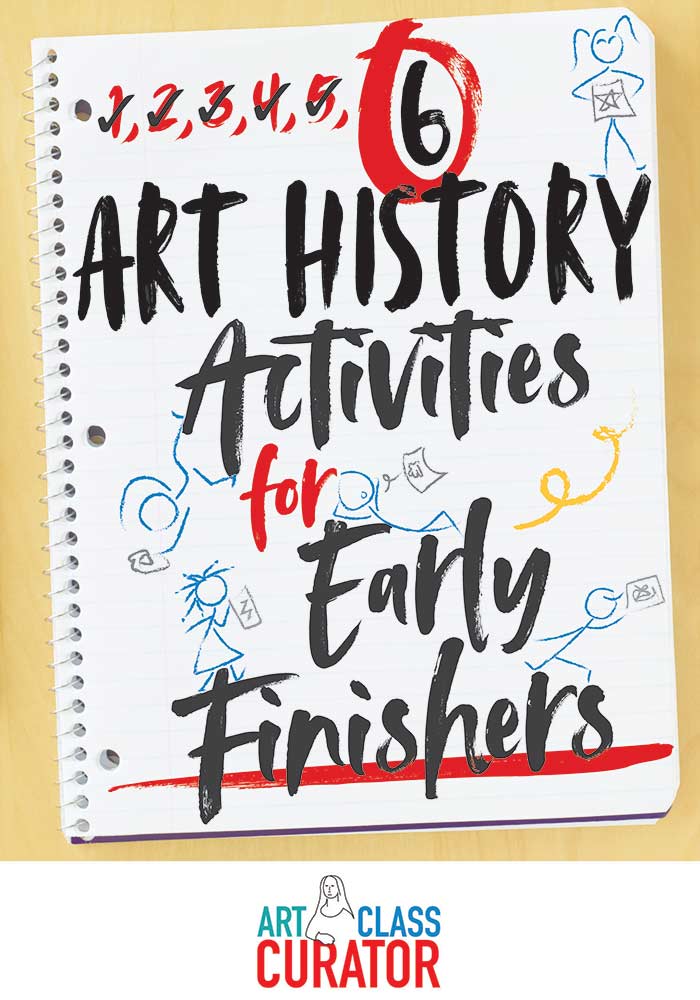
There is hope for the early finisher activities, though. You don’t have to spend hours brainstorming lessons and creating projects to keep them occupied. Simply choose a few of the meaningful art history-inspired early finisher activities below to keep all of your students learning until the bell rings.
When I finally transitioned from being an “art on the cart” teacher to having my own classroom, I set up an area called Creativity Corner. All of my students knew that when they finished their work early, they were expected to head to the corner. This let them take advantage of the supplies (modelling clay, paper, drawing instruments, etc.) and easy finisher activities there without distracting other students. I know this space was a luxury, so don’t fret if you don’t have the extra room. These art history early finisher activities are mess-free, take up little to no space, and can be done at students’ desks.
This post contains affiliate links. When you purchase using links from these links, Art Class Curator receives a small commission with no extra cost to you. Thank you for your support!
Complete the Picture
This easy art appreciation game is perfect for all ages. For Complete the Picture, you give students a small part of a painting like the one above and have them draw the scene around it. Be sure to offer several intriguing images that will spark your students’ imaginations. When your early finishers are done drawing the scene they imagine, direct them to a copy of the full artwork so they can compare their drawing with the actual painting. You can download a free printable and see my favorite artworks for this activity in this post.
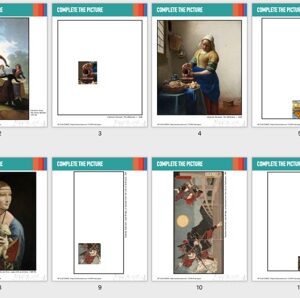
Free PDF!
Complete the Picture
Ready-to-go Art Appreciation Activity
This is a great activity to have on hand in your classroom. Just print it and give it to your student or the whole class. They draw the scene around a small portion of the artwork. Or, just discuss what they notice in the portion and have them predict what will be in the rest of the painting. When they’re done, show them the full (included) artwork and discuss!
Early Finisher Activities: Puzzles
Crowdsource a Puzzle
Have students collaborate across classes to complete a puzzle of an artwork. Putting together a puzzle requires students to use their observation skills and helps them pay attention to details. There are a lot of great artwork puzzles available, from Van Gogh and Hokusai to Vermeer and Renoir. If you’re short on space, use a puzzle mat for easy storage.
Make Your Own Puzzles
Since many art puzzles are in the 1,000+ piece category, an option that might work better for younger students is to create your own art history inspired puzzles. Print some of your favorite artworks and cut them into jigsaw pieces for your students to put back together. For durability, you can laminate the pieces or print the images on card stock or mount to thin cardboard (like cereal boxes).

Art Library
Gather art books to create your own classroom library. Visual encyclopedias and artist biographies offer a wealth of information and images for early finishers to comb through while they wait for their classmates. They can explore art history as a whole or research a specific artist or time period. You can purchase your own books or use your school’s library to offer a variety of titles. If you don’t have the space for physical books but do have easy internet access, have students use websites like Khan Academy, The Met Museum or the art history section of Ducksters.
Scavenger Hunts
Art libraries are perfect for scavenger hunts and there are several ways to use the books (or websites) to get students searching and discovering.
- Create worksheets that direct students to specific pages and have them answer questions about the artwork on that page.
- Create codebreaker worksheets that ask students to find specific items (such as a seashell or Cupid, etc.) then use the page numbers the items were found on to correspond to letters and reveal a secret message.
- Have students find and draw a list of specific items.
- For younger students, add a math component by having them find and draw several of the same item (such as ten hats or three dogs, etc.). For a language integration, have them find objects that start with each letter of the alphabet and draw those (such as an ant for A, a ball for B, a cat for C, etc.).
Art Cards
Postcard sized artworks enable students to quickly ingest a lot of knowledge about multiple pieces. You can create your own or buy a set and write facts and questions on the back for students to ponder. The Louvre compiled a great deck that includes 100 artworks with in-depth historical information on each card.
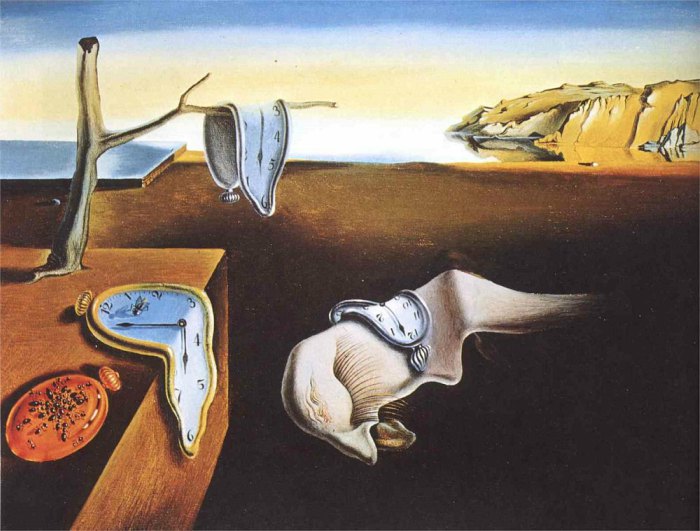
Drawing Prompts
One of my favorite early finisher activities is zany drawing prompts. I write several notecards and separate them into who, what, how, and where categories. Students pick a card from each category and draw the resulting combination. For example, a student might be asked to draw a giraffe (who) dancing (what) slowly (how) on the moon (where).
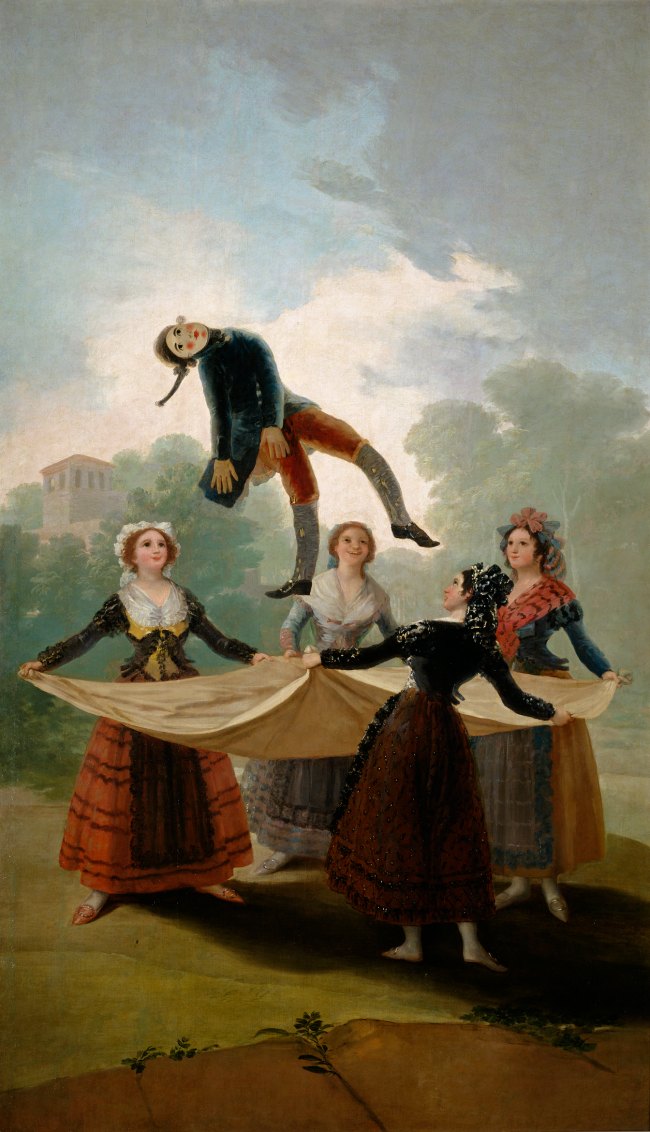
To put an art history twist on these freeform prompts, create cards based on specific artworks. For example, using The Straw Manikin as inspiration, you could write cards asking for a mannequin (who) being thrown (what) up high (how) in the air (where). Or, you can give them a complete prompt, such as ‘draw time moving slowly’ (based on The Persistence of Memory shown above) or ‘draw dogs in a theatre’ (based on Their Master’s Voice pictured below). When they complete their drawing, you can direct them to images of the artwork that inspired the prompt.
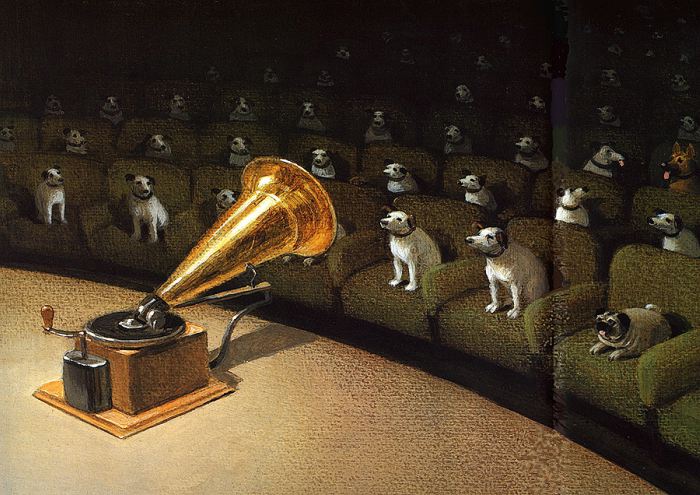
Using Technology
It’s becoming more and more common for students to have their own computers or tablets in the classroom. Whether your students share a computer or have their own devices, utilizing technology is a great way to keep early finishers engaged.
There are endless art resources online, but searching through all of them to find quality content takes a lot of time, so here are some of my favorites:
- The National Gallery of Art website offers fifteen entertaining, interactive activities that will allow students to explore their own creativity while learning about art history.
- They can explore the elements and principles with The Artist’s Toolkit.
- Students get to learn about the myths and legends that have influenced artists around the world on this site.
- Many Native American languages do not have a word for art, yet their cultures are teeming with artworks that are both functional and, in many cases, sacred. Surrounded by Beauty introduces students to the unique art of Native Americans from across the continent.
- Inside Art takes students on an interactive adventure that explores the techniques and artists behind four artworks.
- Students can make their very own Jackson Pollock splatter painting.
- A. Pintura: Art Detective lets students play the part of a 1940’s noir detective with a degree in art history who must identify the origin of a painting by exploring the works of various artists. The site offers a free worksheet that can be paired with the game.
- Younger students will enjoy doodling over the masterpieces of artists from Rembrandt and Degas to Miro and Picasso on Toy Theater.
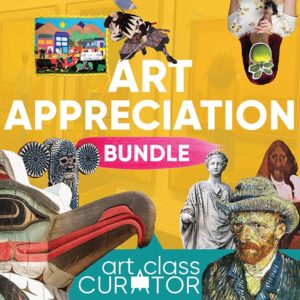
Ultimate Art Appreciation Teaching Bundle
This stellar bundle includes everything you need to teach incredible, engaging art appreciation lessons.
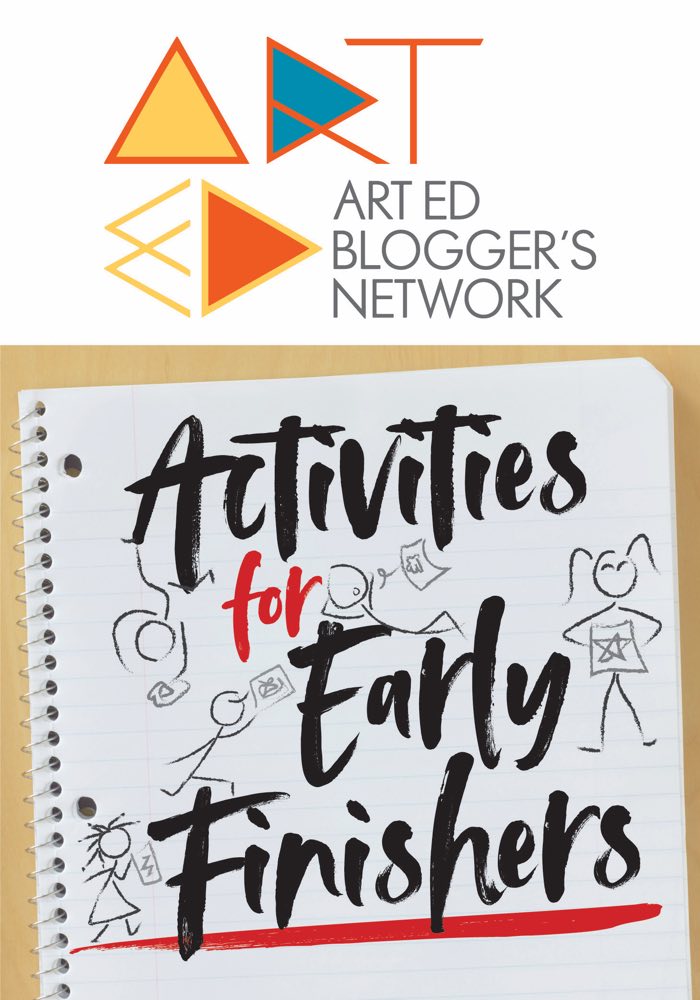
This post is a part of The Art Ed Blogger’s Network: Monthly Tips and Inspiration from Art Teacher Blogs. On the first Tuesday each month, each of these art teacher blogs will post their best ideas on the same topic.
Participating Art Teacher Blogs:
- Art Class Curator
- Art Ed Guru
- Art is Basic
- Art Room Blog
- Art Teacher Tales
- Art with Mr. E
- Arte a Scuola
- Artful Artsy Amy
- Capitol of Creativity
- Create Art with ME
- MiniMatisse
- Mona Lisa Lives Here
- Mr. Calvert’s Art Room Happenings
- Mrs. Boudreaux’s Amazing Art Room
- Mrs. T’s Art Room
- Ms. Nasser’s Art Studio
- Party in the Art Room
- shine brite zamorano
- Tales from the Traveling Art Teacher
- There’s a Dragon in my Art Room
Please note, this post includes Amazon affiliate links. As an Amazon Associate I earn from qualifying purchases.

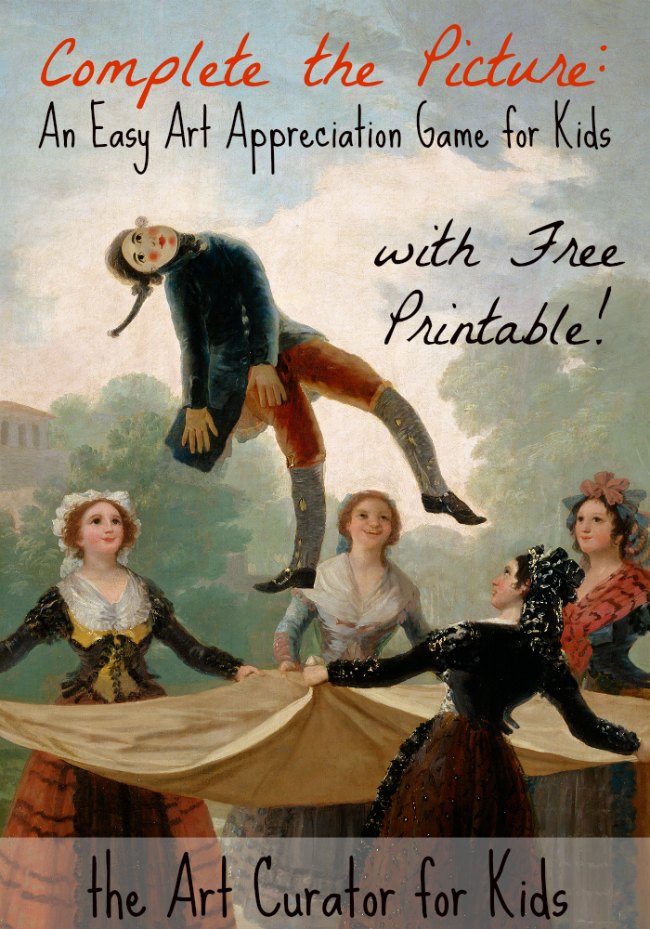
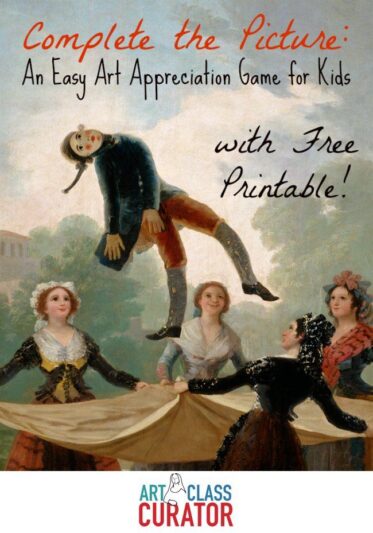

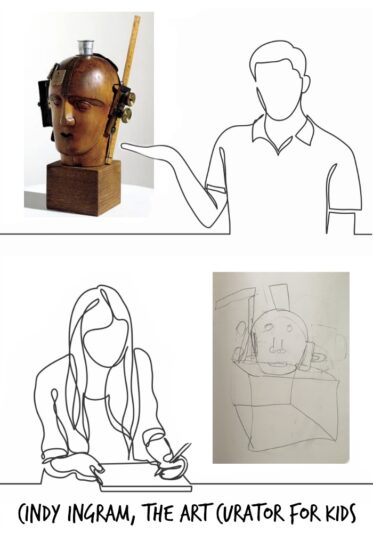

I’m excited to get these.
This was very helpful with a lot of good resources.